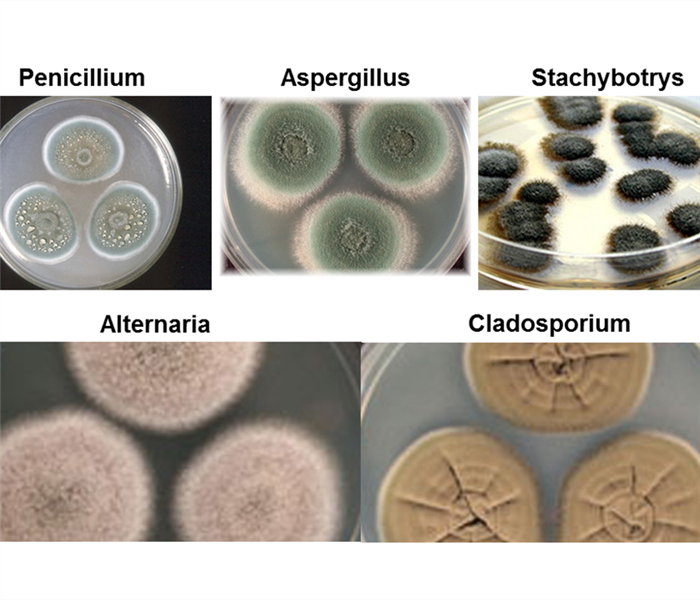Common Household Molds
2/1/2018 (Permalink)
COMMON HOUSEHOLD MOLDS
Mold can be found nearly everywhere. This hardy organism survives both indoors and outdoors alike. Despite many of the positive things mold can provide (the original antibiotic - penicillin, a variety of delicious foods like cheese, and acts as a natural decomposition agent of organic matter), mold causes problems for many of us. All molds are not the same, and some varieties are more harmful than others. Most of us have some experience with mold, but do you know which types are common household molds? Below is a short introduction to the different species of molds and where you can commonly find them.
INTRODUCTION TO COMMON HOUSEHOLD MOLDS
Alternaria
Indoors, it is often found in carpets, textiles, house dust, and potentially damp areas like window frames and showers. It can also be found in plant soil.
Aspergillus
Usually found in warmer climates in areas of water damage or extreme dampness. Aspergillus species are also commonly found in house dust. Also found in building materials and in fall leaves and other decomposing matter like compost piles.
Cladosporium
The most commonly identified outdoor fungus, but it can easily enter into the house through the HVAC and other airflow entryways. Cladosporium also has an indoor species that grows on textiles, wood and other porous, damp areas.
Penicillium
Species may be found growing on wallpaper, wallpaper glue, and decaying fabrics in water-damaged buildings or homes. It is also found in carpet and in interior fiberglass duct insulation. Some species can produce mycotoxins.
Stachybotrys
Pronounced (stack-ee-BOT-ris), Stachybotrys requires excessive moisture to thrive (usually running water) and is a slimy black mold. Fortunately, of all common household molds, stachybotrys is found least often in homes.
Have a Mold Problem? Call Today 800-455-9453
If you have a mold problem in your home or business, your primary focus should be safety:
- Significant mold growth can occur in 48-72 hours.
- A strong, musty odor may indicate hidden mold behind drywall or under carpeting.
What to Do:
- Stay out of affected areas.
- Turn off the HVAC system and fans.
- Contact a SERVPRO Franchise Professional for mold remediation services.
What NOT to Do:
- Don’t touch or disturb the mold.
- Don’t blow air across any surfaces with visible or suspected mold growth.
- Don’t attempt to dry the area yourself.
- Don’t spray bleach or other disinfectants on the mold.





 24/7 Emergency Service
24/7 Emergency Service
